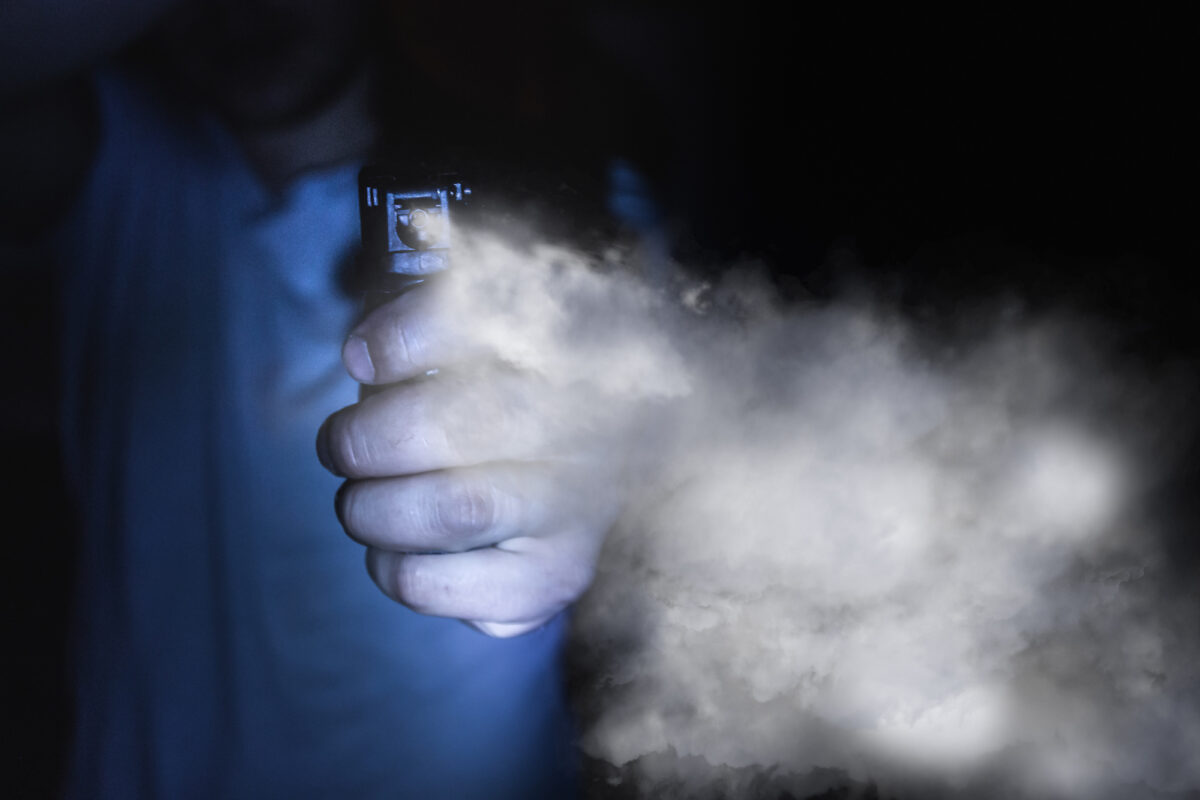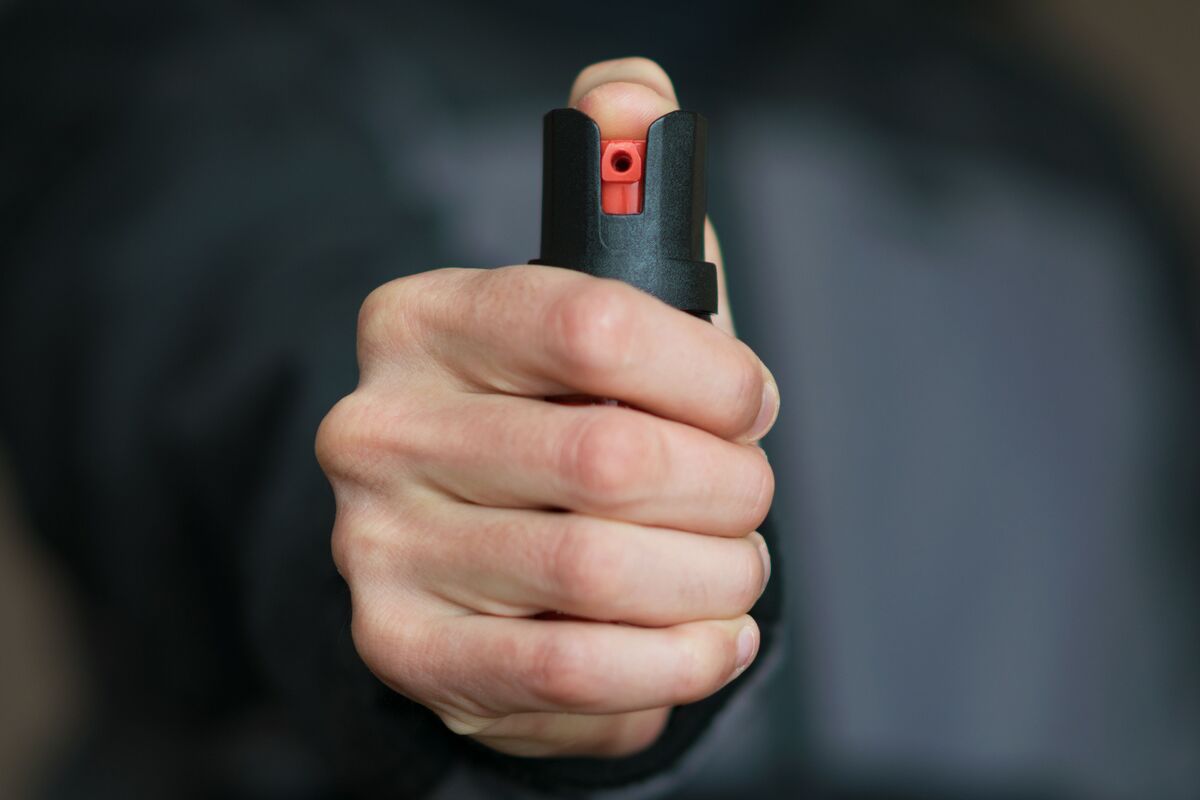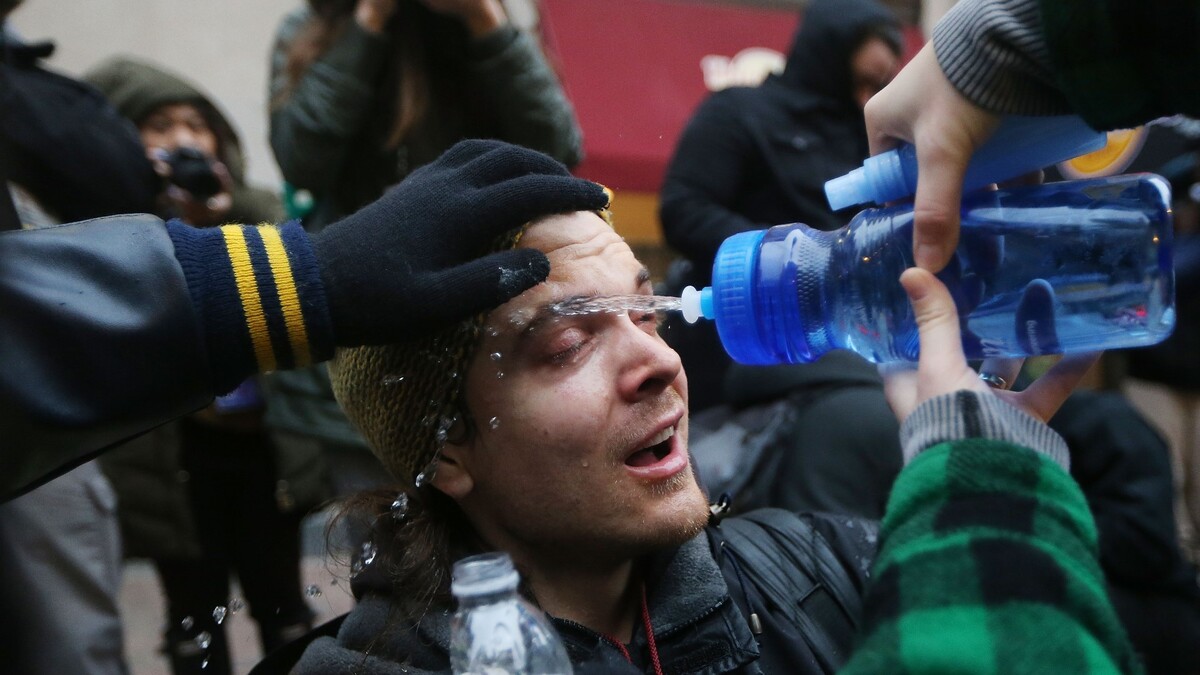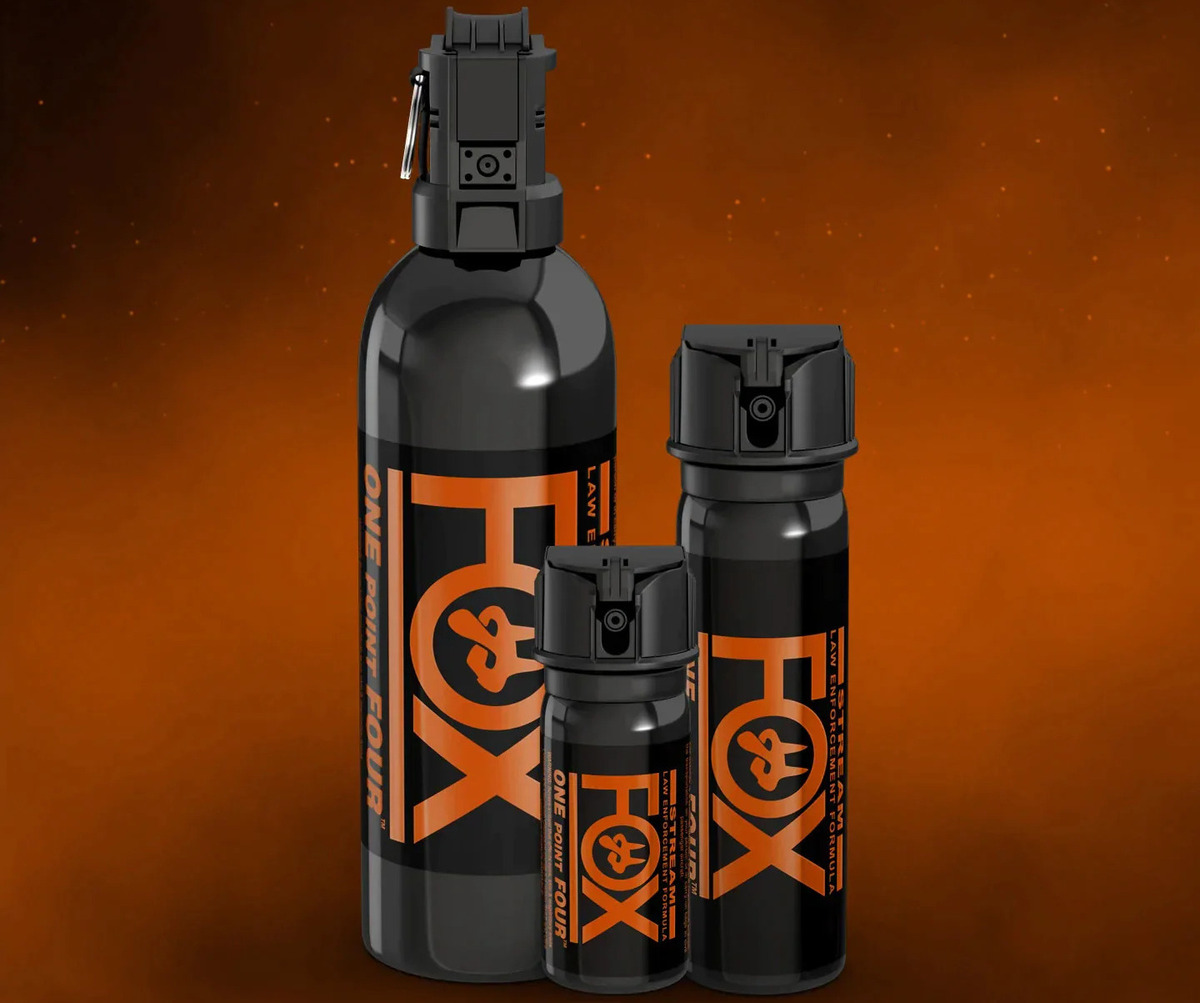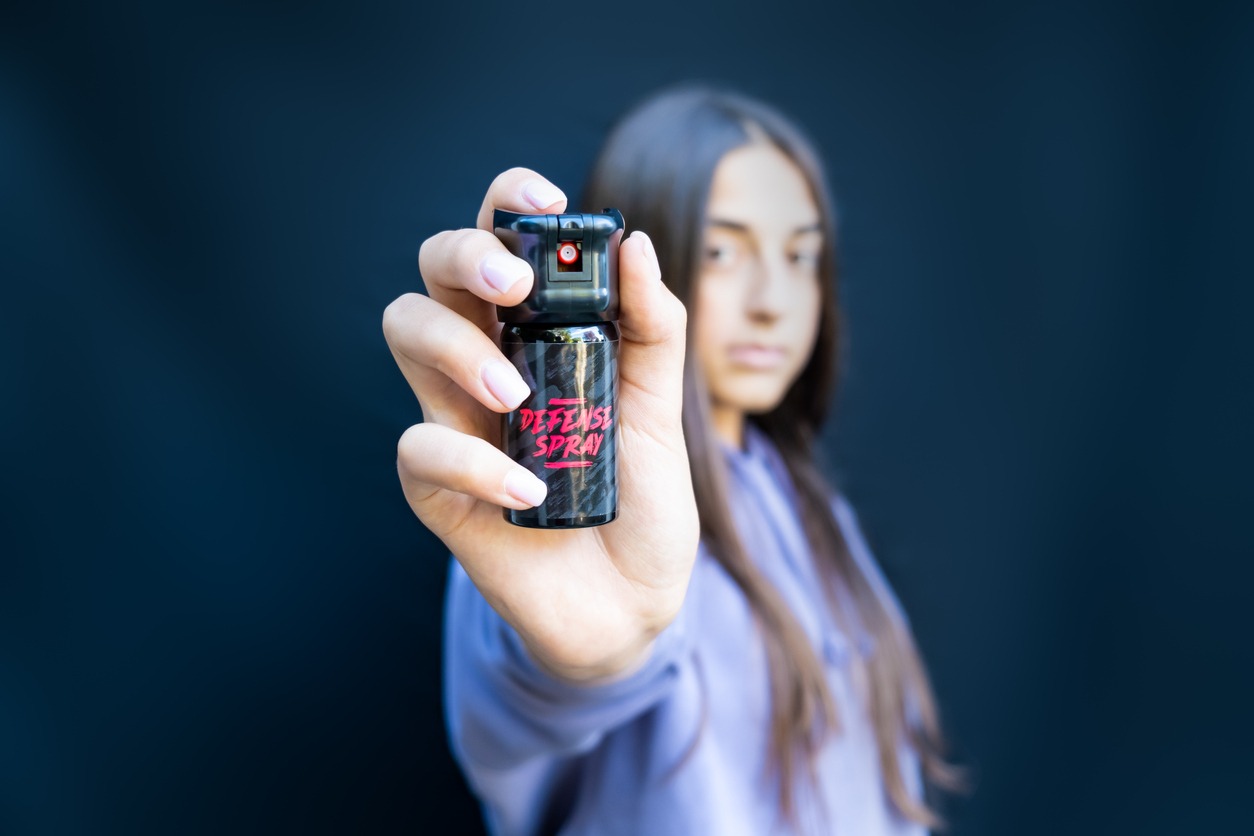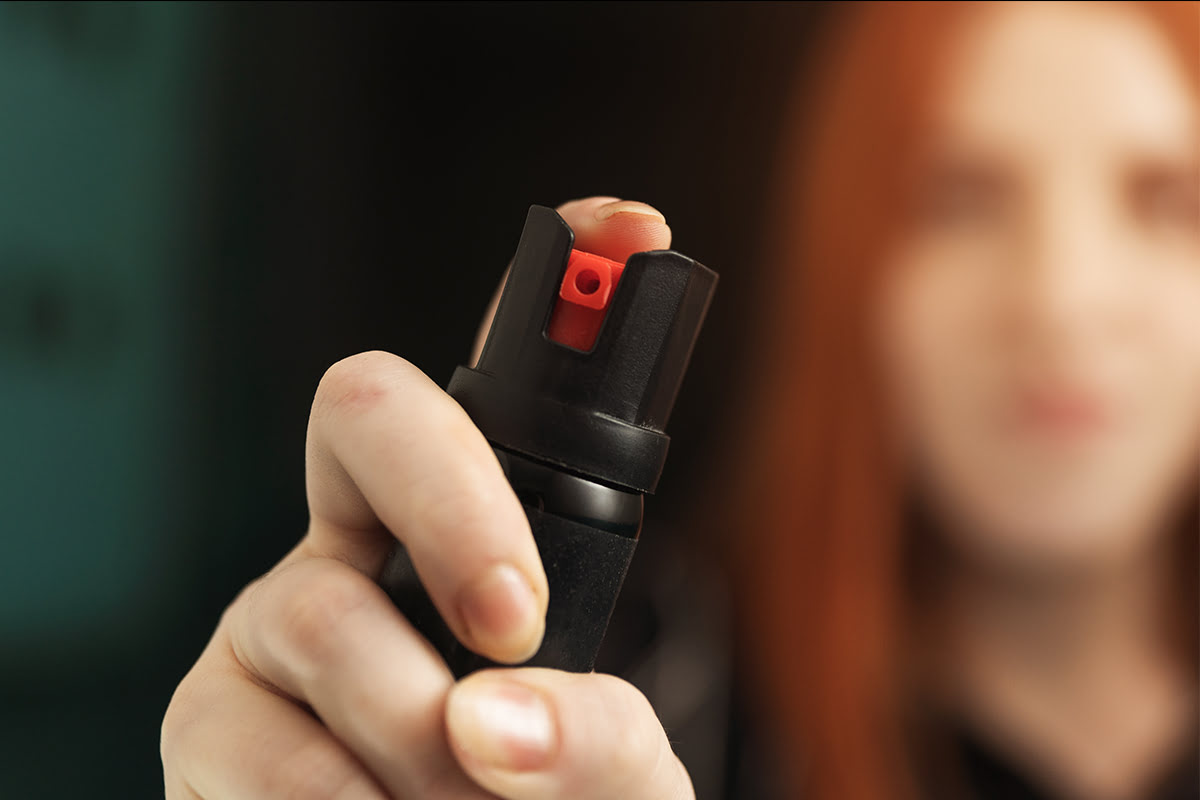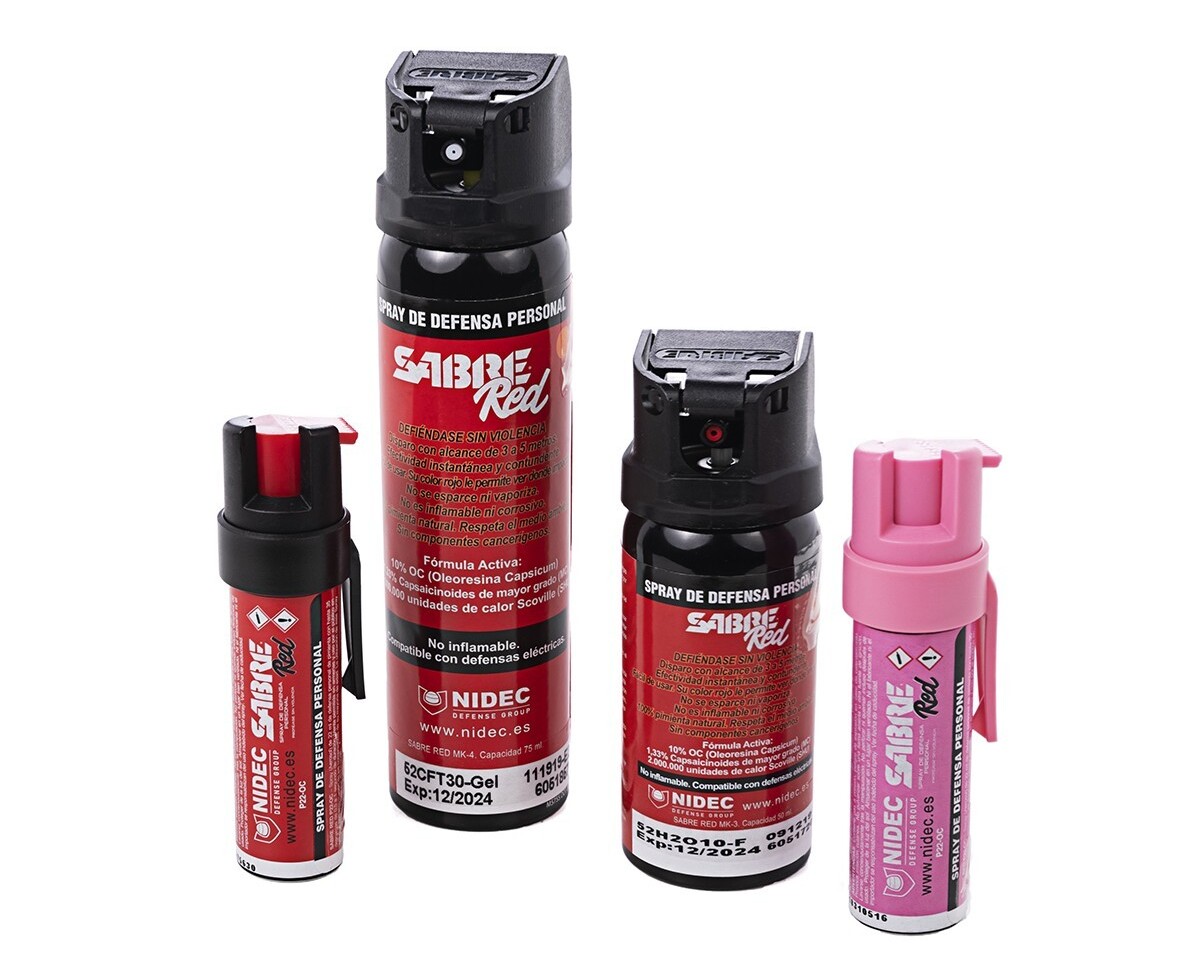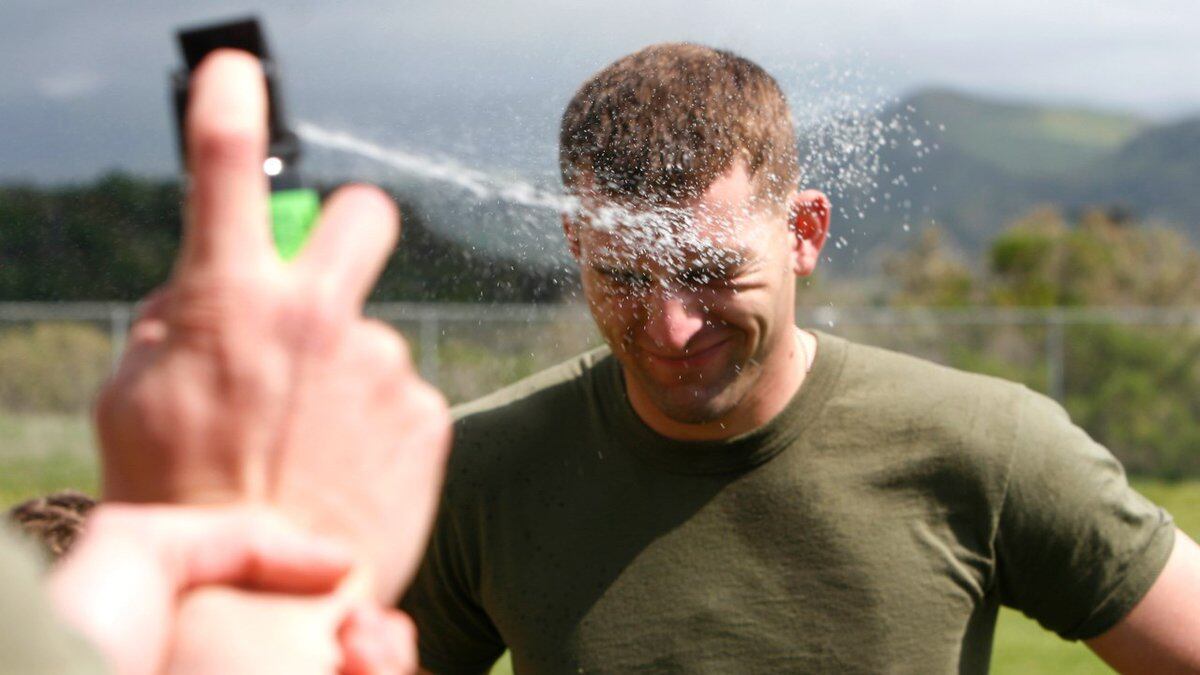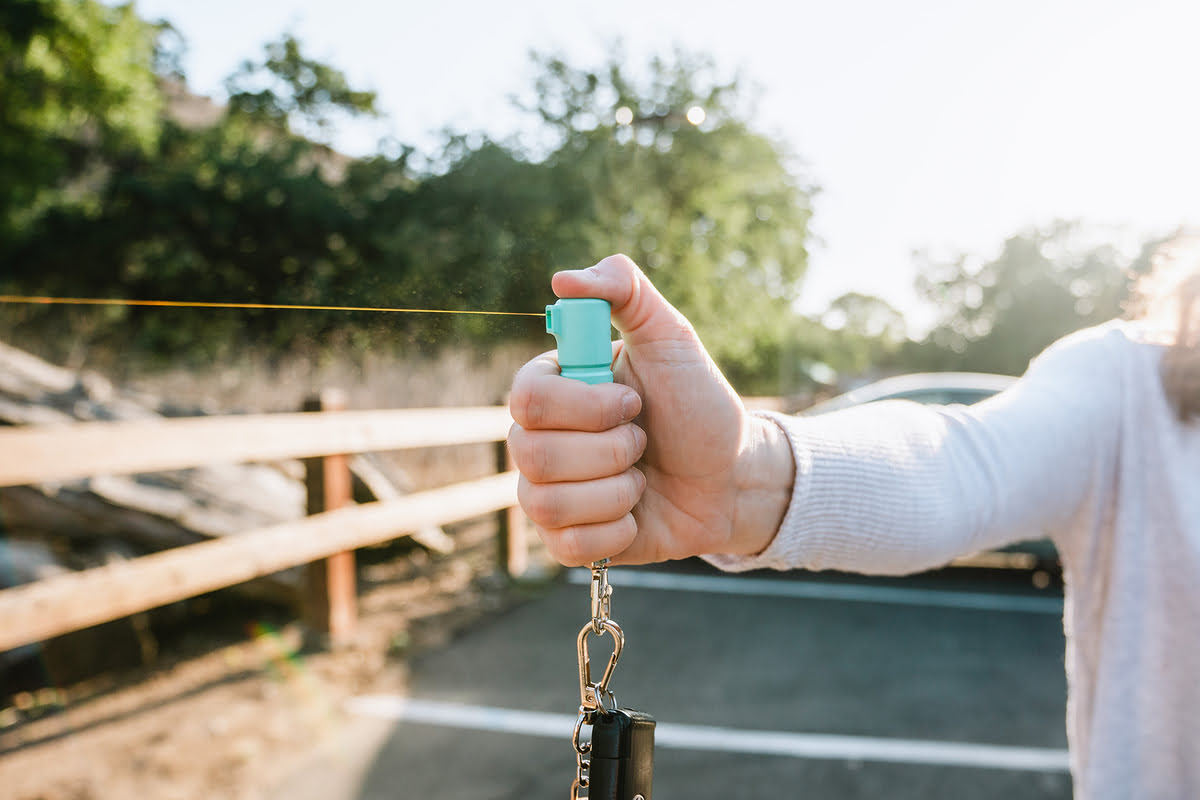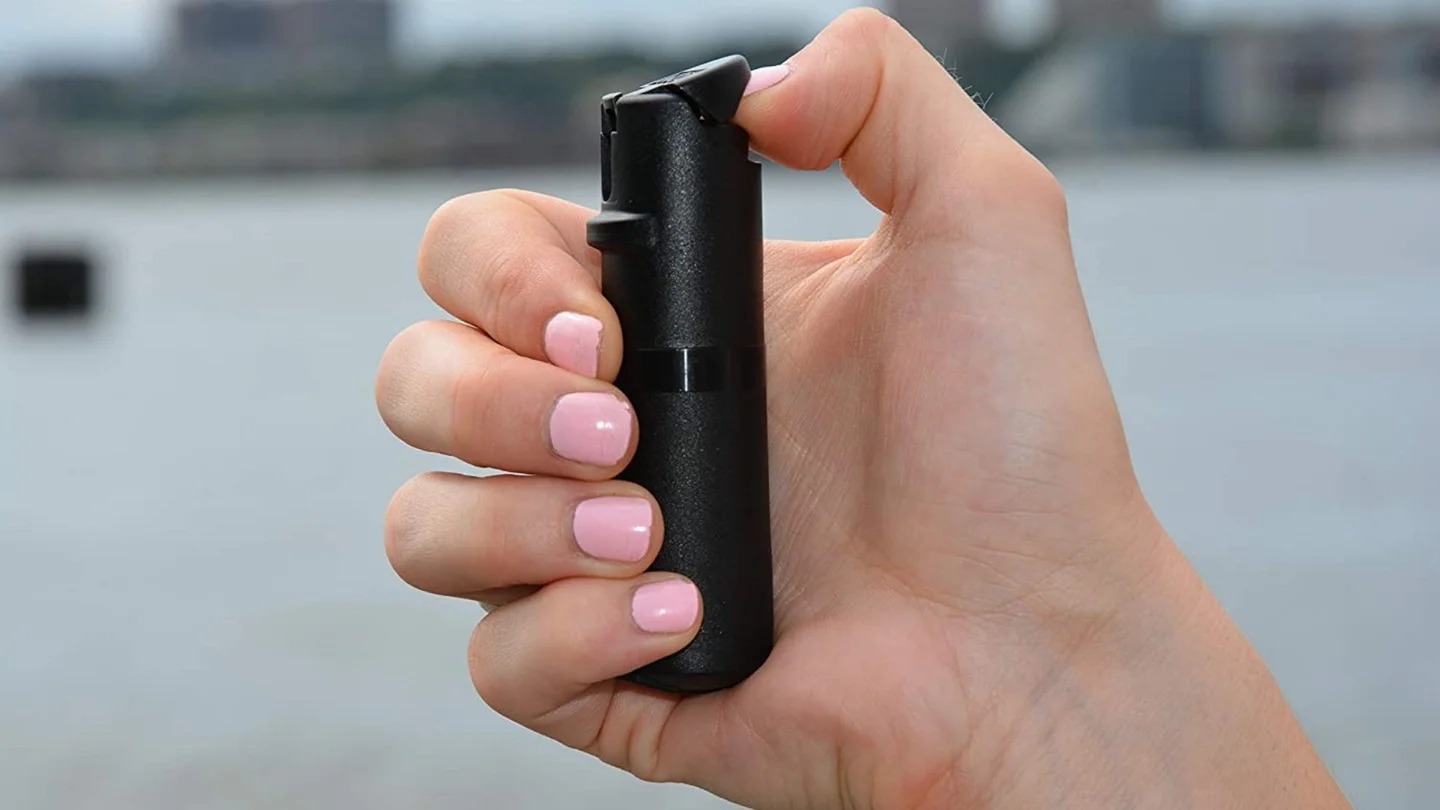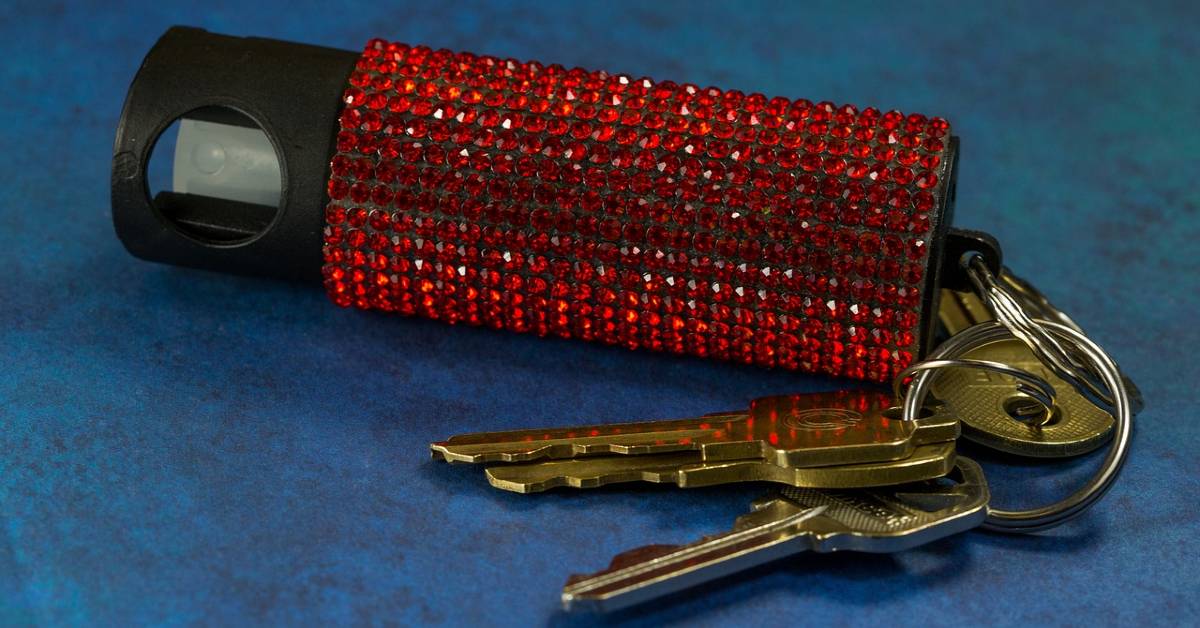Home>Home Security and Surveillance>What Is Bear Spray Vs Pepper Spray
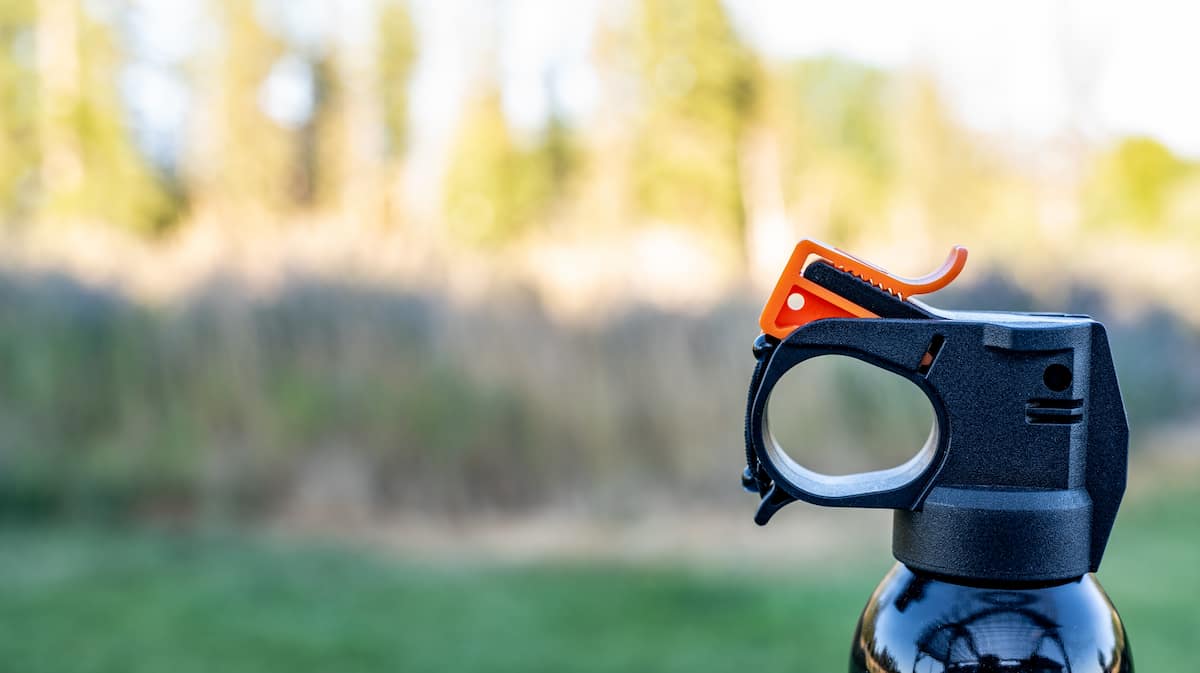

Home Security and Surveillance
What Is Bear Spray Vs Pepper Spray
Modified: March 6, 2024
Discover the difference between bear spray and pepper spray for home security and surveillance. Learn which one is more effective in protecting your family.
(Many of the links in this article redirect to a specific reviewed product. Your purchase of these products through affiliate links helps to generate commission for Storables.com, at no extra cost. Learn more)
Introduction
Welcome to the world of home security and surveillance! In this comprehensive guide, we will explore everything you need to know about ensuring the safety of your home and loved ones. From the latest technology in security systems to tips on preventing break-ins, we’ve got you covered.
In today’s fast-paced world, protecting our homes and families has become more important than ever. With advancements in technology, home security systems have become more sophisticated, offering a wide range of features to keep intruders at bay. Additionally, surveillance systems provide an extra layer of protection, allowing homeowners to monitor their property even when they’re away.
In this article, we will delve into the intricacies of home security and surveillance, covering everything from the basics to advanced techniques. We’ll walk you through the process of choosing the right security system for your home, identifying potential vulnerabilities, and implementing effective security measures. Whether you’re a newbie to the world of home security or a seasoned expert, this guide will provide valuable insights and actionable tips to ensure the safety of your home.
We understand that home security can be a complex and overwhelming topic, with a myriad of options and technologies to navigate. That’s why we’re here to simplify things for you. We’ll break down the jargon and explain the different types of security systems available, such as alarm systems, surveillance cameras, motion sensors, and smart home integration. We’ll also discuss the pros and cons of each option, so you can make an informed decision based on your specific needs and budget.
Additionally, we’ll delve into the world of surveillance, exploring the different types of cameras and their functionalities. We’ll cover indoor and outdoor cameras, as well as specialized options like doorbell cameras and pet cameras. We’ll discuss the importance of video quality, storage options, and remote access, providing you with all the information you need to choose the right surveillance system for your home.
Lastly, we’ll provide you with tips on how to create a comprehensive security plan for your home. We’ll guide you through the process of identifying potential vulnerabilities and implementing measures to address them. From securing doors and windows to installing proper lighting and creating a strong neighborhood watch, we’ll cover all the bases to ensure your home is as secure as possible.
So, whether you’re a homeowner looking to upgrade your security system or a renter looking for ways to increase the safety of your apartment, this guide is for you. By the end of this article, you’ll be equipped with the knowledge and tools to create a secure environment for you and your loved ones. Let’s dive in!
Key Takeaways:
- Bear spray is specifically designed to deter and incapacitate bears with a higher concentration of capsaicin and wider dispersion range, creating a safe distance for retreat in bear encounters.
- Pepper spray is effective for self-defense against humans with a shorter range and precise targeting, providing temporary incapacitation to escape dangerous situations. Always use responsibly and within legal boundaries.
Read more: What Is The Best Bear Pepper Spray
Definition of Bear Spray
Bear spray, also known as bear repellent or bear deterrent, is a specialized form of pepper spray that is specifically designed to deter or incapacitate bears in the event of an encounter. It is a non-lethal defense option that can help individuals protect themselves when hiking, camping, or living in areas where bear encounters are possible.
Bear spray is typically made from a concentrated formula of capsaicin, the active ingredient found in chili peppers. This formula is combined with a propellant, such as nitrogen or carbon dioxide, to create a pressurized canister. When the spray is deployed, it releases a cloud of fine droplets that can distance itself from the user by up to 30 feet, creating a barrier between the person and the bear.
Unlike traditional pepper spray, which is designed for use against humans, bear spray has a higher concentration of capsaicin and a wider dispersal range. This is necessary due to the differences in size, strength, and physiology between humans and bears. Bear spray is specifically formulated to cause intense irritation to a bear’s eyes, nose, and respiratory system, temporarily incapacitating the animal and preventing it from posing a threat.
It’s important to note that bear spray should only be used as a last resort when encountering an aggressive or charging bear. In most cases, bears will display warning signs or engage in bluff charges to assert their dominance or defend their territory. However, if a bear does charge at you, bear spray can be an effective tool to deter the bear and create a safe space for you to retreat.
It’s essential to ensure that you are using a bear spray that is specifically formulated for bears. Regular pepper sprays designed for self-defense against humans may not be as effective against bears and could potentially exacerbate the situation. Always check the label to ensure that the product you choose is intended for use against bears and has been approved by appropriate authorities.
When purchasing bear spray, it’s important to choose a reputable brand from a trusted outdoor or wildlife store. Look for a product that has been tested and proven to be effective against bears. Remember that bear spray has a limited shelf life, typically around 2-3 years, so be sure to check the expiration date and replace it when necessary to ensure it remains effective.
Overall, bear spray is a vital tool for those who venture into bear country. It provides an added layer of protection and can serve as a deterrent in the rare event of a bear encounter. However, it’s important to remember that bear spray is not a guarantee of safety and should always be used in conjunction with proper bear safety practices, such as making noise, traveling in groups, and properly storing food and scented items.
Definition of Pepper Spray
Pepper spray, also known as OC spray (Oleoresin Capsicum), is a self-defense product that utilizes a concentrated extract derived from hot peppers to incapacitate an attacker. It is a non-lethal, handheld device designed to temporarily disable an individual by causing severe irritation to their eyes, respiratory system, and skin.
The active ingredient in pepper spray is capsaicin, a natural chemical compound found in chili peppers. Capsaicin is responsible for the intense burning sensation and inflammation experienced when pepper spray comes into contact with the eyes, nose, or skin. The spray is typically contained in a small aerosol canister, making it easily portable and accessible for self-defense purposes.
Pepper spray is widely used by individuals for personal protection against potential threats or in situations where physical confrontation is imminent. It is commonly carried by law enforcement officers, security personnel, and individuals seeking a means of self-defense. The spray can be deployed in short bursts, releasing a concentrated stream or fog that can reach distances of up to 10-15 feet.
The effects of pepper spray vary depending on the concentration of capsaicin and the individual’s sensitivity to the compound. When exposed to pepper spray, the eyes will immediately experience intense pain, involuntary closure, and temporary blindness. The respiratory system may also be affected, leading to coughing, difficulty breathing, and a burning sensation in the throat and chest. Additionally, contact with the skin can cause a burning, stinging sensation.
It’s important to note that pepper spray is intended for self-defense purposes only and should be used responsibly. It is not meant for offensive or aggressive use and should be employed as a deterrent to allow the user the opportunity to escape a dangerous situation.
When purchasing pepper spray, it is crucial to ensure that you are buying a product from a reputable source. Look for brands that meet legal requirements and have been tested for effectiveness. Additionally, be mindful of local regulations regarding the purchase, possession, and use of pepper spray in your area.
Proper usage of pepper spray involves carefully directing the spray towards the attacker’s face, specifically targeting the eyes and nose. It is important to practice proper aim and understand the limitations of the spray’s range to ensure effective deployment. Remember, pepper spray is not a guarantee of safety, and it should be used in conjunction with other personal safety measures and self-defense techniques.
Overall, pepper spray is a widely recognized and effective tool for personal protection. It provides individuals with a non-lethal means of self-defense, assisting in disabling potential threats and allowing for swift escape from dangerous situations. However, it is essential to use pepper spray responsibly, familiarize yourself with its limitations, and comply with legal regulations to ensure effective and lawful use.
Differences Between Bear Spray and Pepper Spray
While both bear spray and pepper spray are designed to protect individuals from potential threats, there are significant differences between the two products in terms of their formulations, uses, and intended targets. Understanding these differences is crucial to ensure that you choose the right option for your specific needs. Here are some key distinctions between bear spray and pepper spray:
- Formulation: Bear spray and pepper spray have different formulations. Bear spray typically contains a higher concentration of capsaicin, the active ingredient derived from chili peppers, to effectively deter and incapacitate bears. Pepper spray, on the other hand, is formulated to be effective against humans and often has a lower concentration of capsaicin.
- Dispersion Range: Bear spray is designed to have a wider dispersion range to account for the larger size and greater range of a bear’s attack. It can typically reach distances of up to 30 feet. Pepper spray, on the other hand, generally has a shorter range, usually between 10 to 15 feet.
- Legality and Approval: The legality and approval of bear spray and pepper spray may vary depending on the jurisdiction. Bear spray is typically regulated and approved specifically for use against bears, while pepper spray may have different legal restrictions when used against humans. It’s important to familiarize yourself with the local laws and regulations regarding the purchase, possession, and use of these products.
- Effectiveness: Due to its higher concentration of capsaicin and wider dispersion range, bear spray is more effective in deterring and temporarily incapacitating bears. It causes intense irritation to a bear’s eyes, nose, and respiratory system, creating a safe distance and allowing the user to retreat. Pepper spray, while effective against humans, may not have the same impact on bears due to their physiology and size.
- Intended Targets: Bear spray is specifically designed to deter and incapacitate bears in the event of an attack or aggressive encounter. It is not meant for use against humans. Pepper spray, on the other hand, is intended for self-defense against human threats. It is widely used by individuals for personal protection and can temporarily disable an attacker by causing severe irritation to their eyes, respiratory system, and skin.
- Safety Considerations: When using bear spray or pepper spray, it’s important to follow proper safety guidelines. Bear spray should only be used as a last resort in bear encounters and should be directed towards the bear’s face. Pepper spray should be aimed at the attacker’s face, focusing on the eyes and nose. Both sprays should be used responsibly and in accordance with regulations and laws in your area.
It’s crucial to choose the right spray for your intended use. If you plan to venture into bear country or areas with potential bear encounters, it is recommended to carry bear spray that is specifically formulated and approved for use against bears. If you’re primarily concerned about personal safety in urban environments or self-defense against humans, pepper spray is the more suitable option.
Understanding the differences between bear spray and pepper spray is vital in making an informed decision to ensure your safety and the safety of others. Consider the specific threats you may encounter and the intended use of the spray, and always adhere to local laws and regulations when purchasing and using these products.
Effectiveness Against Bears
Bear encounters can be extremely dangerous, and having a reliable means of defense is crucial for outdoor enthusiasts and individuals living in bear country. Both bear spray and pepper spray are often considered as options for deterring bear attacks, but their effectiveness may differ when it comes to bears specifically.
Bear spray is specifically designed to deter and incapacitate bears. It contains a higher concentration of capsaicin, the active ingredient derived from chili peppers, compared to pepper spray intended for use against humans. The higher concentration, paired with its wider dispersion range, makes bear spray highly effective against bears.
When deployed, bear spray creates an intense, irritating cloud of fine droplets that can reach distances of up to 30 feet. The cloud acts as a barrier between the user and the bear, causing temporary incapacitation by intensely irritating the bear’s eyes, nose, and respiratory system. This effect can obstruct the bear’s vision, impair its ability to breathe properly, and create significant discomfort, discouraging further advancement and allowing the user to safely retreat.
Pepper spray, while effective against humans, may not be as reliable when it comes to deterring bears. Pepper spray typically has a lower concentration of capsaicin and a shorter dispersion range compared to bear spray. The size, strength, and thick fur of a bear can make it more resistant to the effects of pepper spray, reducing its effectiveness.
It is essential to understand that the effectiveness of both bear spray and pepper spray against bears heavily relies on proper deployment techniques and adherence to safety guidelines. In a bear encounter, it is crucial to remain calm, stand your ground, and assess the situation before any defensive action. In most cases, bears will exhibit warning signs or engage in bluff charges to establish dominance or protect their territory.
If a bear charges towards you, bear spray can be a powerful tool to deter the bear and create a safer space for escape. It’s important to properly aim the spray towards the bear’s face to maximize its effectiveness. Correct usage and understanding the limitations of bear spray can greatly increase its chances of success.
It is worth noting that while bear spray has been proven to be effective, it is not a guarantee of safety. It is always best to prioritize bear avoidance and prevention strategies, such as making noise to avoid surprising bears, properly storing food and scented items away from sleeping areas, and respecting the natural habitat of bears.
When venturing into bear territory, it is recommended to carry bear spray that is specifically formulated and approved for use against bears. Familiarize yourself with local regulations regarding the purchase, possession, and use of bear spray, and ensure that you receive proper training on its usage.
Overall, bear spray is the preferred option when it comes to deterring bear attacks. Its higher concentration of capsaicin, wider dispersion range, and specialized formulation make it more effective against bears compared to pepper spray. However, always practice caution, respect wildlife, and prioritize bear safety measures when exploring or living in bear habitats.
Bear spray and pepper spray are both used for self-defense, but bear spray is specifically designed to deter bears, while pepper spray is for human attackers. Bear spray has a wider spray range and a stronger concentration of active ingredients.
Read more: What Is Mace Vs Pepper Spray?
Effectiveness Against Humans
When it comes to personal safety and self-defense against potential human threats, both bear spray and pepper spray can be effective options. However, there are some important considerations to keep in mind regarding their effectiveness against humans.
Pepper spray is specifically designed for use against humans and has been widely used for personal protection for many years. It contains a concentrated extract derived from hot peppers, typically capsaicin, which causes severe irritation when it comes into contact with the eyes, nose, and skin.
When pepper spray is deployed against an attacker, it can cause immediate and intense pain, temporary blindness, respiratory distress, and a burning sensation on the skin. These effects can incapacitate an assailant and provide the user with an opportunity to escape a dangerous situation or seek help.
Bear spray, on the other hand, is not specifically formulated or tested for effectiveness against humans. While bear spray does contain a higher concentration of capsaicin compared to regular pepper spray, its wider dispersion range and specialized formulation make it less practical and less effective as a self-defense tool against humans.
The wider dispersion range of bear spray, typically up to 30 feet, can make it difficult to accurately target an assailant in close quarters, potentially increasing the risk of inadvertently affecting bystanders or the user themselves. Furthermore, the specialized formulation of bear spray may not have the same immediate and intense effects on humans due to differences in physiology and sensitivity compared to bears.
Pepper spray, designed specifically for self-defense against humans, generally has a shorter range, usually between 10 to 15 feet, allowing for more precise targeting in close encounters. Additionally, pepper spray is available in various formulations and strengths, allowing users to choose the level of intensity appropriate to their personal needs and preferences.
It’s important to note that the effectiveness of pepper spray against humans can vary depending on factors such as wind direction, accuracy of deployment, and the individual’s reaction to the spray. Some individuals may have a higher tolerance to the effects of pepper spray, while others may be more sensitive or have underlying health conditions that could impact its effectiveness.
When considering personal safety and self-defense, it’s crucial to keep in mind that the effectiveness of any self-defense tool, including pepper spray, ultimately depends on proper training, situational awareness, and using it within legal boundaries. It’s essential to familiarize yourself with local laws and regulations regarding the purchase, possession, and use of pepper spray for self-defense purposes.
In summary, while both bear spray and pepper spray can be effective for self-defense against potential human threats, pepper spray is specifically designed for this purpose and generally more practical in close-quarters encounters. Bear spray, with its wider dispersion range and specialized formulation, is primarily intended for use against bears and may have limitations when used as a self-defense tool against humans. Always prioritize personal safety, consider appropriate self-defense options, and seek proper training and guidance when using any self-defense tool.
Legal Considerations
When it comes to the purchase, possession, and use of bear spray and pepper spray, there are important legal considerations to keep in mind. While these products can be effective tools for personal safety and defense, it is essential to understand and adhere to the laws and regulations in your specific jurisdiction.
The legality of bear spray and pepper spray can vary between countries, states, and even municipalities. It is crucial to research and understand the specific regulations that apply to your location before acquiring and using these products.
In many jurisdictions, bear spray is regulated and specifically approved for use against bears. It may have different restrictions compared to pepper spray intended for use against humans. These regulations typically include factors such as permitted concentrations of capsaicin, labeling requirements, and guidelines for storage and use.
Pepper spray, which is designed for self-defense against humans, may also be subject to specific laws and regulations. These laws can govern various aspects, including restrictions on the size of the canister, formulations, and permitted uses. Some jurisdictions may require permits or licenses for the purchase and possession of pepper spray, while others may have age restrictions or limit the amount of capsaicin allowed in the spray.
Additionally, some areas may have restrictions on where and how these sprays can be carried. For example, certain locations, such as schools, government buildings, and airports, may prohibit the possession of bear spray and pepper spray.
In order to ensure legal compliance, it is important to purchase bear spray and pepper spray from reputable sources and follow all instructions provided by the manufacturer. This includes using the products only for their intended purposes and in accordance with local laws.
It is also essential to understand the legal implications of using bear spray or pepper spray in self-defense situations. While these sprays are generally considered non-lethal forms of self-defense, improper use or use in certain circumstances may still lead to legal consequences.
If you find yourself in a situation where you need to use bear spray or pepper spray for self-defense, it is important to use it responsibly and proportionately. It should be used as a means to create distance and escape from a threat rather than as a means of causing harm to others.
If you have any uncertainty or questions regarding the legality of bear spray or pepper spray in your area, it is recommended that you consult local law enforcement or legal authorities to obtain accurate and up-to-date information.
Remember, laws and regulations can change, and it is your responsibility to stay informed and comply with the rules and regulations outlined by your specific jurisdiction. By understanding and adhering to the legal considerations, you can ensure that your use of bear spray or pepper spray is within the bounds of the law and contribute to a safer and more secure environment.
Proper Use and Safety Guidelines
Using bear spray or pepper spray for personal safety requires understanding proper use and adhering to safety guidelines. Whether you’re in bear country or concerned about personal defense against human threats, following these guidelines is crucial to ensure your safety and the effectiveness of the spray:
- Read and Follow Instructions: Before using bear spray or pepper spray, carefully read and understand the instructions provided by the manufacturer. Familiarize yourself with the specific deployment techniques, safety precautions, and recommended distances for effective use.
- Be Prepared: Carry bear spray or pepper spray in an easily accessible location, such as a belt holster or pocket, so that it can be readily deployed if needed. Practice retrieving and using the spray in a controlled environment to build familiarity and confidence.
- Deploy at the Right Time: Only use bear spray or pepper spray when there is a clear and imminent threat. Deploying the spray too soon or in non-threatening situations can lead to unnecessary escalation or legal complications.
- Aim Properly: When using bear spray or pepper spray, aim for the attacker’s face, specifically targeting the eyes and nose. In the case of bear spray, aim at the bear’s face to maximize effectiveness. Practice proper aim and familiarize yourself with the spray’s effective range.
- Use Short Bursts: Depress the spray canister in short bursts rather than continuous spray. This conserves the spray and ensures better accuracy. Practice controlling the flow of the spray to avoid accidental overexposure and wasting the product.
- Consider Wind Direction: Be aware of wind direction before deploying the spray. If the wind is blowing towards you, it can blow the spray back in your direction, affecting your own ability to breathe and temporarily disabling you instead of the intended target.
- Move Away: After deploying the spray, create distance between yourself and the threat. Retreat to safety while keeping an eye on the situation. Bear spray and pepper spray are meant to provide temporary incapacitation, giving you an opportunity to escape.
- Seek Medical Attention, if necessary: In the event of accidental exposure to bear spray or pepper spray, seek medical attention if symptoms persist or worsen. Flush affected areas with cool water, avoid rubbing the eyes, and remove contaminated clothing.
- Practice Proper Storage and Disposal: Store bear spray or pepper spray in a cool, dry place away from direct sunlight. Adhere to manufacturer guidelines for proper disposal of expired or unused products to prevent environmental contamination.
It’s important to note that bear spray and pepper spray are not foolproof methods of self-defense. They are designed to provide a temporary advantage and a chance to escape a dangerous situation. It’s recommended to complement the use of bear spray or pepper spray with other personal safety practices, such as situational awareness, self-defense training, and avoiding potentially dangerous areas.
Lastly, always comply with local laws and regulations regarding the purchase, possession, and use of bear spray or pepper spray. Consult local authorities or legal experts to ensure you are well-informed and legally compliant.
By following proper use and safety guidelines and understanding the limitations of bear spray and pepper spray, you can maximize their effectiveness as valuable tools for personal safety.
Conclusion
Home security and surveillance are essential aspects of creating a safe environment for you and your loved ones. By implementing effective security measures and utilizing the latest advancements in technology, you can greatly enhance the protection of your home and deter potential threats.
In this comprehensive guide, we have delved into the world of home security and surveillance, covering a wide range of topics. We explored the differences between bear spray and pepper spray, understanding their specific uses and efficacy against different types of threats. We also discussed the legal considerations surrounding their purchase, possession, and use, emphasizing the importance of adhering to local regulations.
Additionally, we provided insights into the proper use and safety guidelines for bear spray and pepper spray, ensuring that they are deployed effectively and responsibly. Understanding the importance of proper aim, deployment techniques, and being mindful of wind direction can make a significant difference in their effectiveness as self-defense tools.
Home security and surveillance go beyond personal defense tools. It also involves implementing comprehensive security measures, such as choosing the right security system for your home, identifying potential vulnerabilities, and creating a strong neighborhood watch. By practicing proper security protocols and utilizing tools like surveillance cameras and motion sensors, you can greatly enhance the safety of your home.
However, it’s essential to remember that no security system or personal defense tool is foolproof. It is crucial to prioritize safety, awareness, and education. Continuously stay informed about the latest advancements in home security and surveillance technology and regularly assess and update your security measures to adapt to changing circumstances.
Lastly, remember that the ultimate goal of home security and surveillance is to provide peace of mind and create a safe environment for you and your loved ones. By implementing these measures, you can enjoy the comfort of knowing that you have taken proactive steps to protect what matters most.
Thank you for taking the time to explore the world of home security and surveillance with us. We hope that this comprehensive guide has provided you with valuable insights, useful tips, and actionable information to create a secure and safe home environment.
Frequently Asked Questions about What Is Bear Spray Vs Pepper Spray
Was this page helpful?
At Storables.com, we guarantee accurate and reliable information. Our content, validated by Expert Board Contributors, is crafted following stringent Editorial Policies. We're committed to providing you with well-researched, expert-backed insights for all your informational needs.
